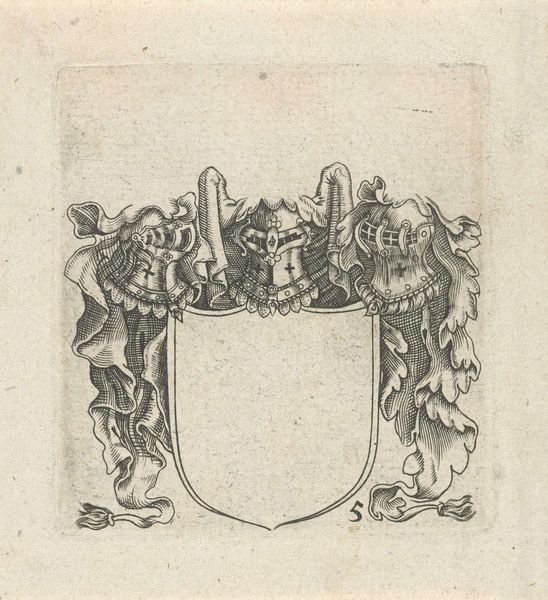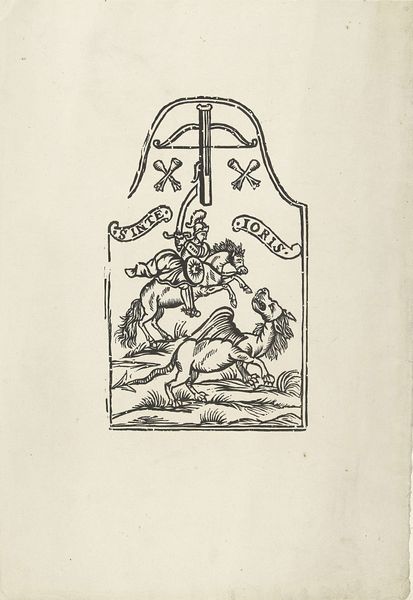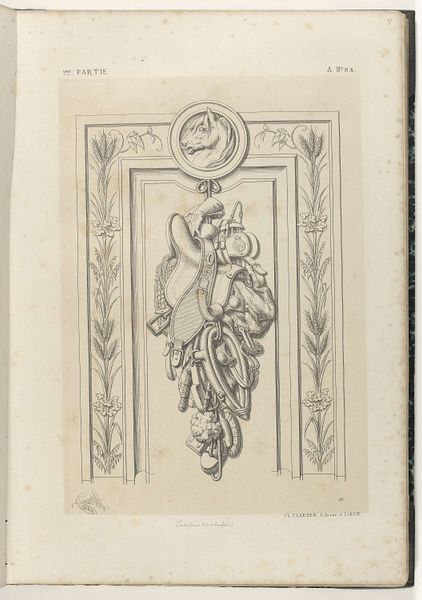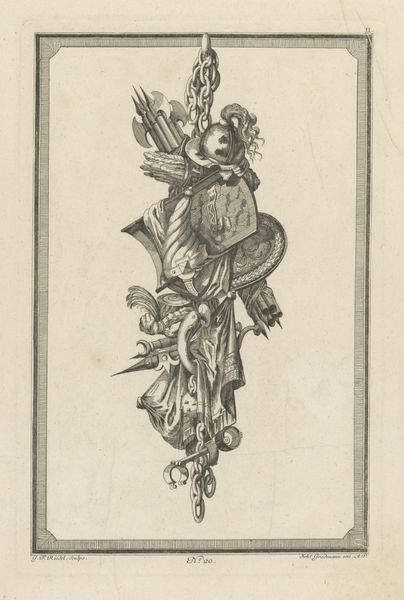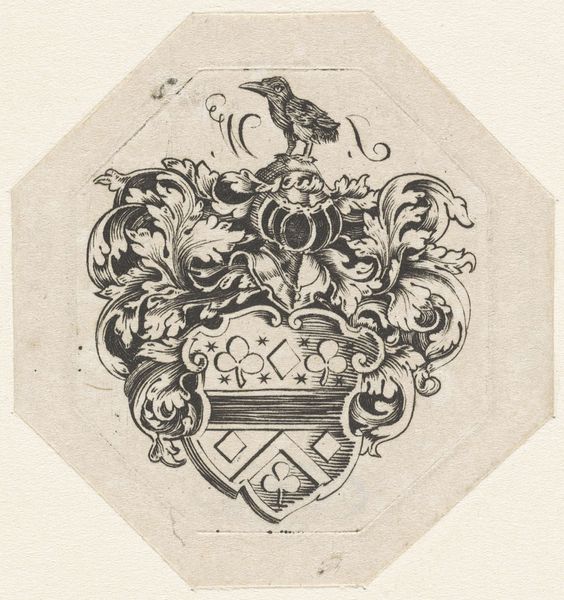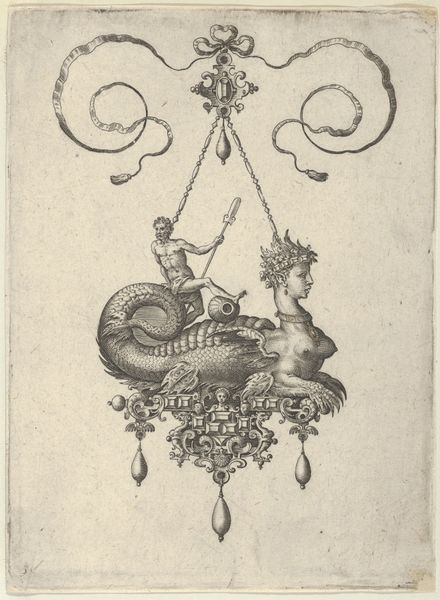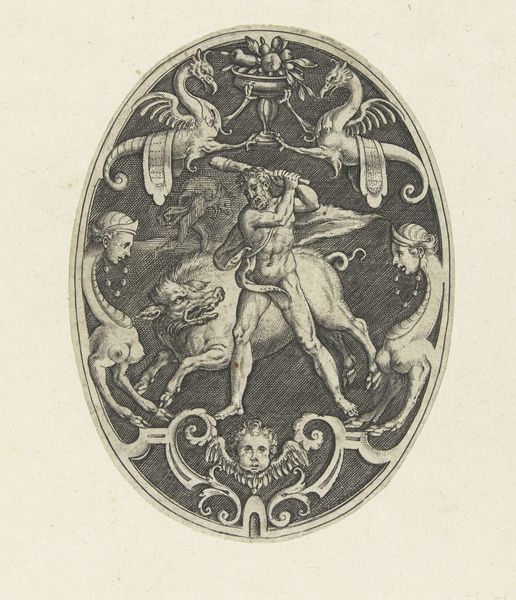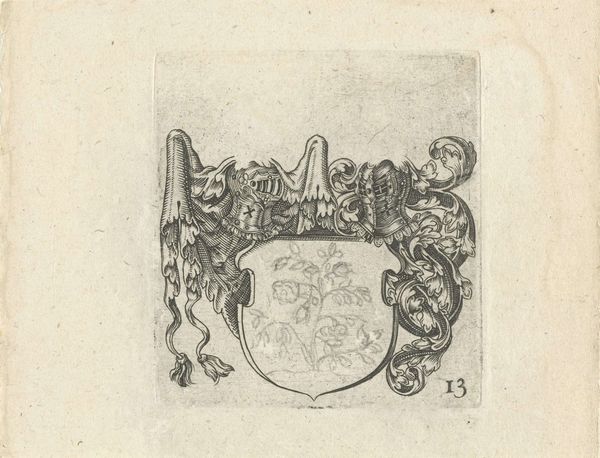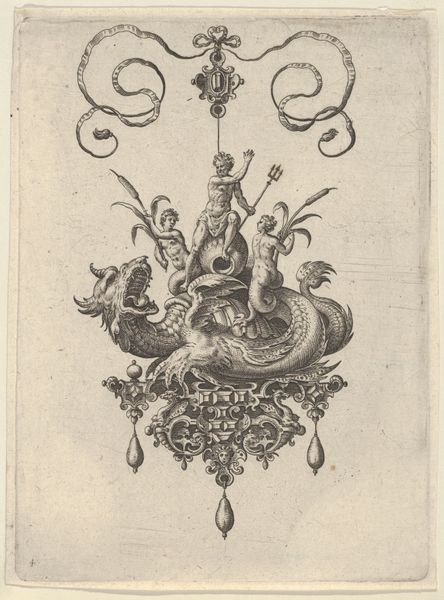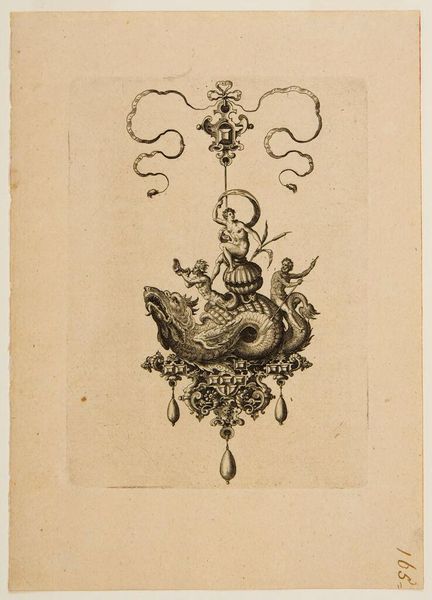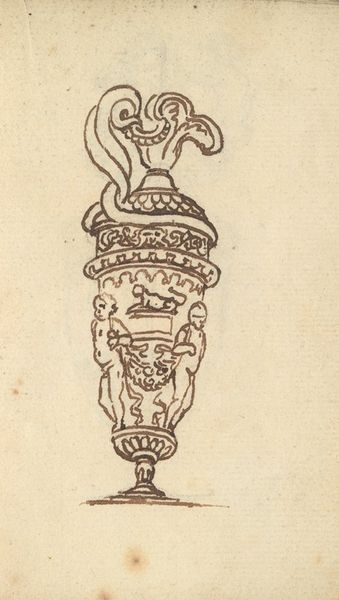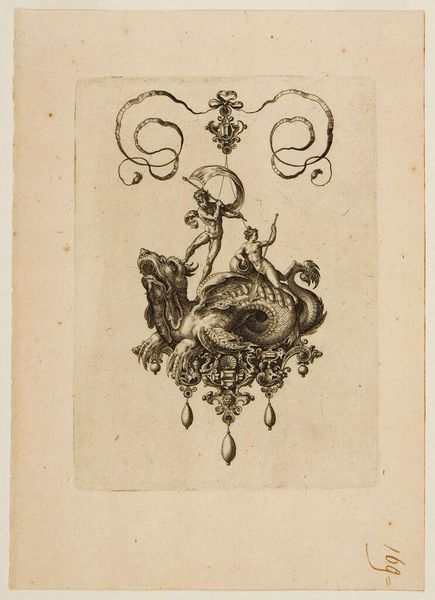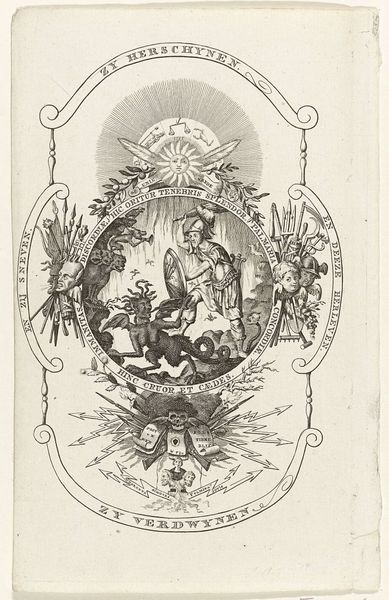
Vignet met een anker en andere objecten uit de scheepvaart 1836 - 1912
0:00
0:00
drawing, print, ink, engraving
#
drawing
# print
#
old engraving style
#
ink
#
geometric
#
pen-ink sketch
#
sketchbook drawing
#
engraving
Dimensions: height 49 mm, width 34 mm
Copyright: Rijks Museum: Open Domain
Editor: This is "Vignet met een anker en andere objecten uit de scheepvaart," or "Vignette with an anchor and other shipping objects," created sometime between 1836 and 1912 by Isaac Weissenbruch. It’s an engraving, with ink on either drawing or print medium. The nautical imagery gives it a kind of old-world, adventurous feel, doesn’t it? What’s your take on this piece? Curator: That’s a great initial observation. Beyond the surface, I think this work speaks volumes about maritime power dynamics in the 19th century. Consider the anchor: a symbol of stability and hope for some, but for enslaved people transported by sea, it represents oppression and the denial of freedom. What narratives do you think the artist was consciously or unconsciously engaging with through this imagery? Editor: I hadn't considered the darker side of maritime symbols. I was focusing on the general symbolism of seafaring and exploration. The sketch feels almost like a coat-of-arms. Curator: Exactly! These symbols often served to legitimize colonial endeavors, intertwining commerce with conquest. We see that connection further complicated by the fact that Weissenbruch lived and worked during a time of immense shifts in our social understanding. How might his artistic choices, then, either reinforce or subtly critique the prevailing narratives? Editor: So, looking at it again, the vignette does seem less about innocent adventure and more about the weight of history, specifically the entanglement of trade, colonialism, and the sea. Thanks, that gives me a lot to think about regarding the historical context! Curator: Precisely. Art serves as a mirror, reflecting the complexities of its time, prompting us to engage in critical self-reflection about our past and present.
Comments
No comments
Be the first to comment and join the conversation on the ultimate creative platform.
